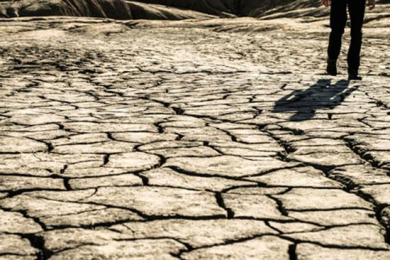The near real-time assessment of drought risks is crucial to enhance food security in vulnerable regions around the world. SERVIR, a joint venture of National Aeronautics and Space Administration (NASA) and United States Agency for International Development (USAID), now provides a worldwide dataset for the Evaporative Stress Index (ESI), to analyse and visualize vegetation stress on a weekly basis and at a spatial resolution of 5 km. The dataset is accessible on the Servir Global website.
Facilitating early warning
The primary purpose of the ESI is the monitoring of early signs of "flash droughts". These conditions are characterized by a rapid rise of surface temperatures, together with a drop in humidity and precipitation, leading to high rates of evapotranspiration (ET) from the soil and finally to a lack of water and drought conditions.
Using satellite observations of surface temperatures the ESI indicates how the current rate of ET compares to average conditions. Negative ESI values are indicating an inadequate supply of soil moisture and stressed vegetation. The ESI is therefore delivering soil water data without requiring ground-based precipitation observations. This can be beneficial for countries that lack gapless datasets. Compared to other vegetation based indices (i.e. EVI, NDVI) the ESI shows signals that indicate changes faster. During periods of drought, the additional and more immediate information can help to brace fast decisions of farmers to adapt to periods of drought, especially due to the ability of the ESI to enable condition forecasts.
Different ways to access
Besides traditional methods of downloading and visualizing the data, SERVIR provides an easy access via their “ClimateSERV” web-GIS application. The available ESI products are composited over 4-week and 12-week time periods. The shorter time scale of 4 weeks may therefore be more representative of fast-changing conditions, while the 12-week composite integrates data over a longer period of time and helps to analyse slow changing conditions.

